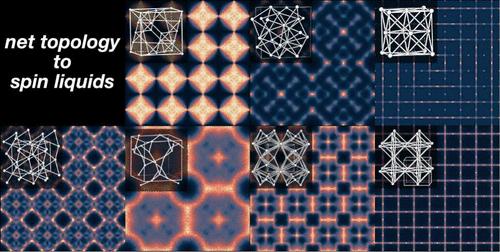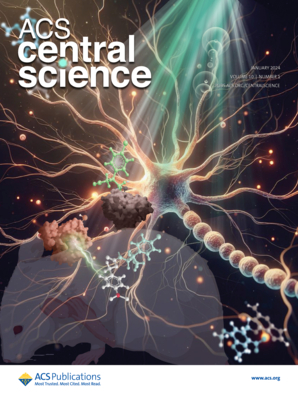通过拓扑搜索高对称性网络发现经典自旋液体
IF 12.7
1区 化学
Q1 CHEMISTRY, MULTIDISCIPLINARY
引用次数: 0
摘要
自旋液体是非微观物质状态的典型例子。寻找新的自旋液体是一项关键的跨学科挑战。几何挫折--即自旋占据的网的几何形状排除了简单有序态的产生--是产生这些内在无序态的一种特别富有成效的方法。之前的研究主要集中在少数几个高对称性网络上。然而,还有许多三维网络,每个网络都有可能形成独特的状态。在本文中,我们针对最简单的相互作用集--反铁磁性海森堡自旋和伊辛自旋的近邻耦合--研究了同时具有顶点和边缘传递性的高对称性网。众所周知的crs(火成岩)网是唯一不存在有序性的近邻海森堡反铁磁体,而我们发现了两个新的受挫网(lcx 和 thp),它们拥有有限温度的海森堡自旋液态,具有强抑制磁有序性和非共线基态。通过伊辛自旋,我们发现了三种新的经典自旋液体,它们在 T/J = 0.01 时不存在有序性。我们重点介绍了含有这些高对称性网的材料,如果用适当的磁离子替代,这些材料就有可能承载这些不寻常的状态。我们的系统调查将为寻找新型磁性相提供指导。本文章由计算机程序翻译,如有差异,请以英文原文为准。

Discovering Classical Spin Liquids by Topological Search of High Symmetry Nets
Spin liquids are a paradigmatic example of a nontrivial state of matter. The search for new spin liquids is a key interdisciplinary challenge. Geometrical frustration─where the geometry of the net that the spins occupy precludes the generation of a simple ordered state─is a particularly fruitful way to generate these intrinsically disordered states. Prior focus has been on a handful of high symmetry nets. There are, however, many three-dimensional nets, each of which has the potential to form unique states. In this paper, we investigate the high symmetry nets─those which are both vertex- and edge-transitive─for the simplest possible interaction sets: nearest-neighbor couplings of antiferromagnetic Heisenberg and Ising spins. While the well-known crs (pyrochlore) net is the only nearest-neighbor Heisenberg antiferromagnet which does not order, we identify two new frustrated nets (lcx and thp) possessing finite temperature Heisenberg spin-liquid states with strongly suppressed magnetic ordering and noncollinear ground states. With Ising spins, we identify three new classical spin liquids that do not order down to T/J = 0.01. We highlight materials that contain these high symmetry nets, and which could, if substituted with appropriate magnetic ions, potentially host these unusual states. Our systematic survey will guide searches for novel magnetic phases.
求助全文
通过发布文献求助,成功后即可免费获取论文全文。
去求助
来源期刊

ACS Central Science
Chemical Engineering-General Chemical Engineering
CiteScore
25.50
自引率
0.50%
发文量
194
审稿时长
10 weeks
期刊介绍:
ACS Central Science publishes significant primary reports on research in chemistry and allied fields where chemical approaches are pivotal. As the first fully open-access journal by the American Chemical Society, it covers compelling and important contributions to the broad chemistry and scientific community. "Central science," a term popularized nearly 40 years ago, emphasizes chemistry's central role in connecting physical and life sciences, and fundamental sciences with applied disciplines like medicine and engineering. The journal focuses on exceptional quality articles, addressing advances in fundamental chemistry and interdisciplinary research.
 求助内容:
求助内容: 应助结果提醒方式:
应助结果提醒方式:


